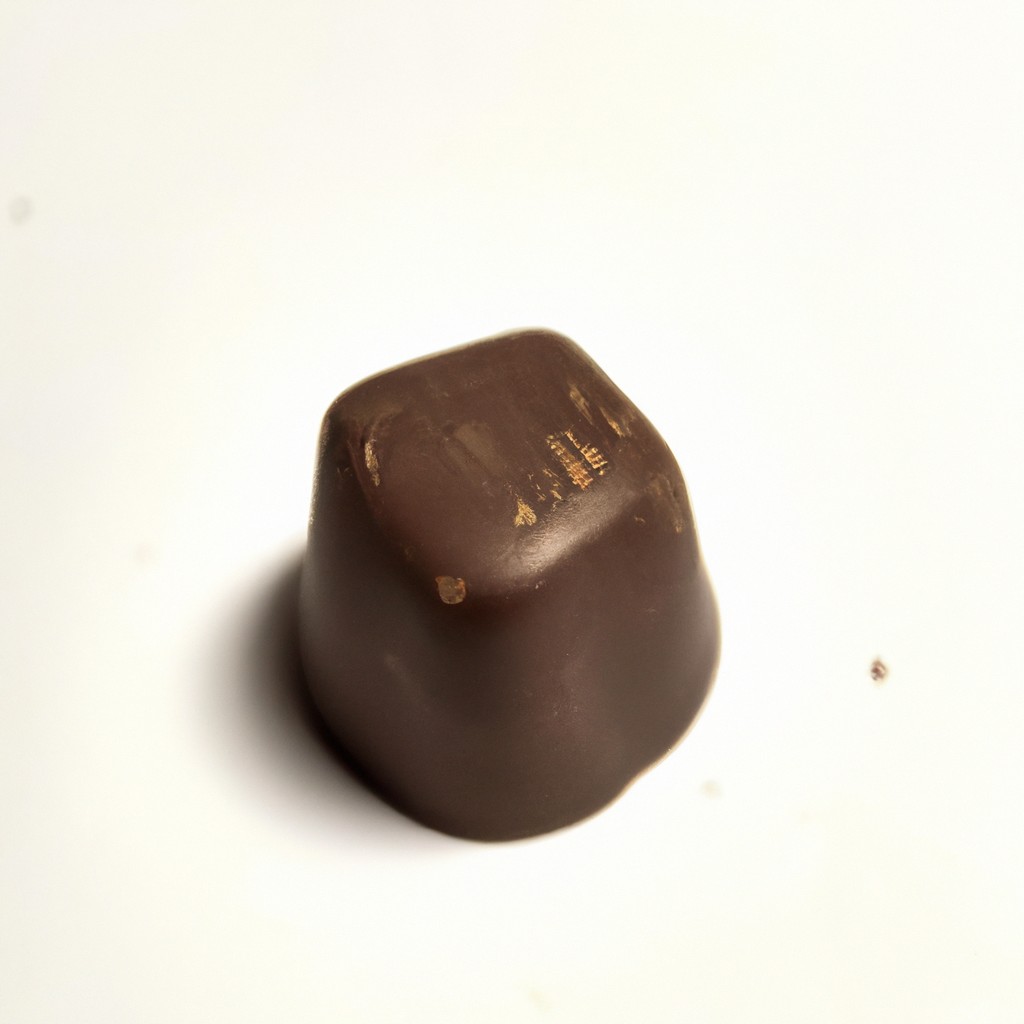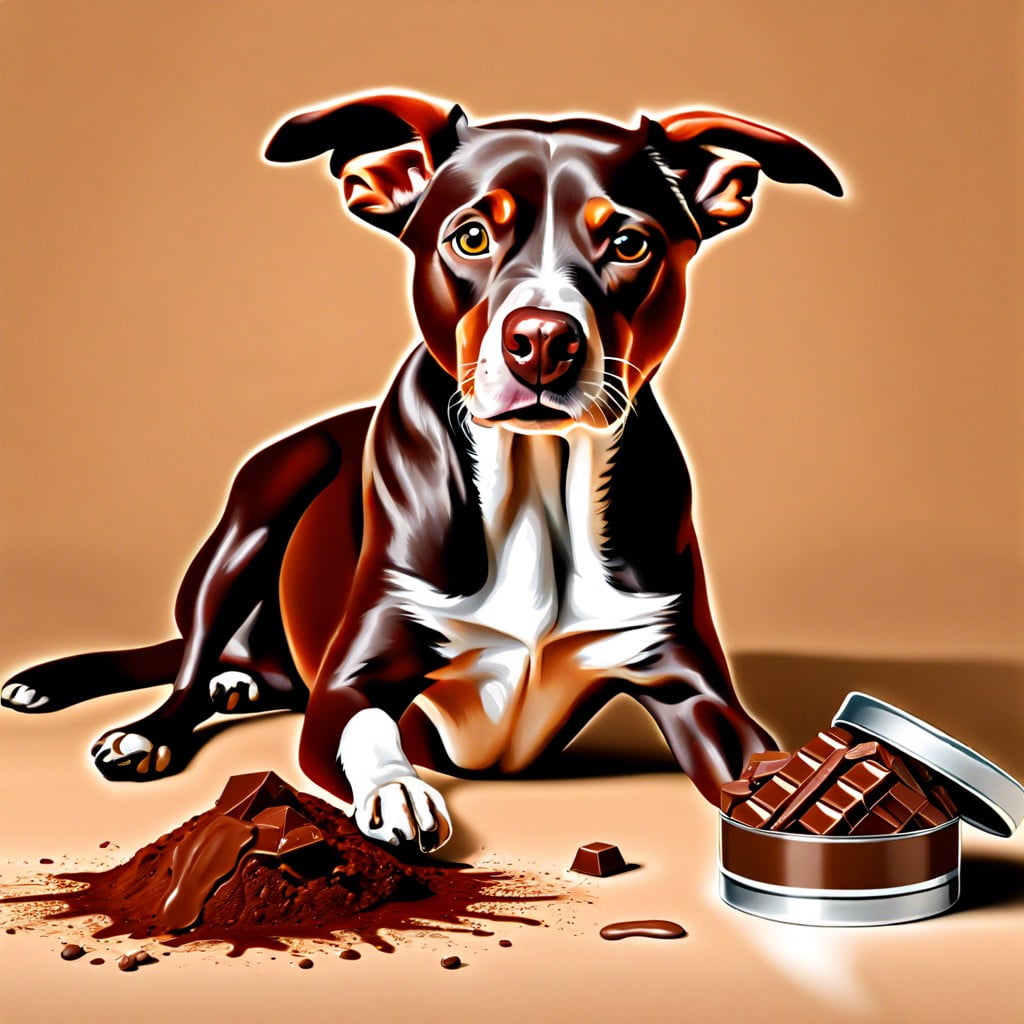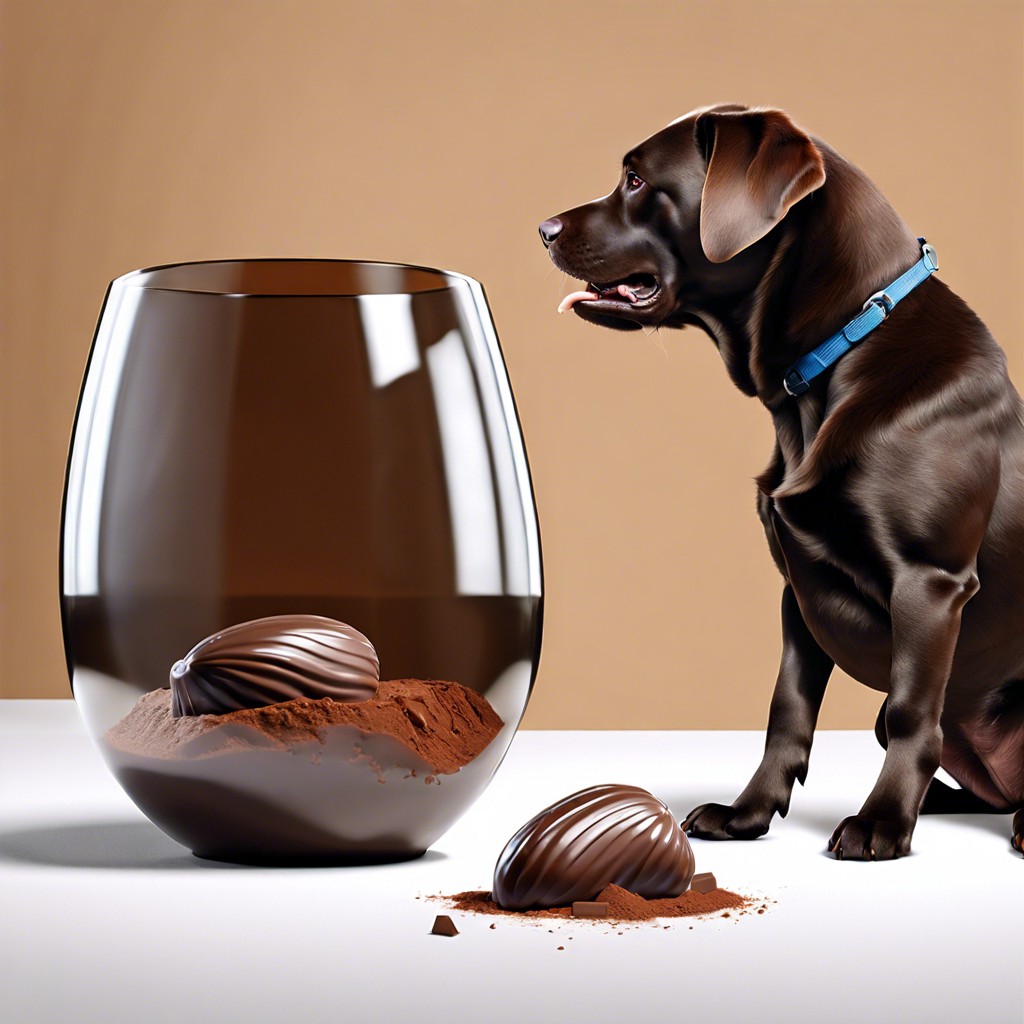Chocolate, surprisingly harmful to our canine friends, contains substances toxic to dogs which this article will thoroughly explain.
Key takeaways:
- Chocolate contains theobromine and caffeine, toxic to dogs.
- Symptoms of poisoning: vomiting, diarrhea, rapid breathing, seizures.
- Cardiac arrest and muscle tremors can occur in severe cases.
- Risk and toxicity levels depend on dog size and type of chocolate consumed.
- Take immediate action: ascertain chocolate type, monitor symptoms, contact a vet, do not induce vomiting, keep chocolate out of reach.
Inside
The Toxicity of Chocolate to Dogs

Chocolate contains theobromine and caffeine, compounds that are part of a class known as methylxanthines. While humans can metabolize these compounds efficiently, dogs process them much more slowly, allowing toxic levels to build up in their system.
Symptoms of chocolate poisoning in dogs may include vomiting, diarrhea, rapid breathing, increased heart rate, and seizures. Darker chocolates contain higher levels of theobromine and are therefore more dangerous. Even a small amount of such chocolate can be harmful, especially to smaller breeds.
In severe cases, chocolate ingestion can lead to cardiac arrest and muscle tremors. The onset of symptoms can occur between six to twelve hours after consumption. It is crucial to note that no amount of chocolate is considered safe for dogs. Immediate veterinary care is essential if ingestion is suspected.
How a Dog’s Size Influences Chocolate Toxicity Risks
The risk of chocolate toxicity in dogs is directly related to their size and the type of chocolate consumed. Smaller breeds, such as Chihuahuas or Pomeranians, can experience toxic effects from consuming much less chocolate compared to larger breeds like Labradors or German Shepherds. This is due to the concentration of theobromine, a toxic compound found in chocolate, which is more potent in smaller body masses.
Dark chocolate and unsweetened baker’s chocolate contain higher levels of theobromine than milk or white chocolate, making them more dangerous. For a small dog, even a minimal amount of dark chocolate can be lethal, whereas a larger dog may tolerate a slightly larger dose without immediate severe consequences. However, no amount of chocolate is safe for any dog, regardless of size.
A useful reference point is that mild chocolate toxic effects can be seen when a dog ingests approximately 20 milligrams of theobromine per kilogram of body weight. Moderate to severe signs may occur at 40-50 milligrams per kilogram, and a potentially lethal dose is around 60 milligrams per kilogram.
To gauge the potential risk, considering both the dog’s weight and chocolate type is critical. A chocolate toxicity calculator, with inputs for the dog’s weight and the amount and type of chocolate consumed, can provide a quick estimation of potential harm and is an essential tool for dog owners.
Immediate Actions to Take If Your Dog Ingests Chocolate
Upon discovering your dog has ingested chocolate, act swiftly to minimize the risk of chocolate poisoning:
1. Ascertain the type of chocolate and the quantity consumed, as darker chocolates contain higher levels of theobromine, which is more toxic to dogs.
2. Monitor for symptoms of chocolate poisoning, which can include vomiting, diarrhea, rapid breathing, and seizures.
3. Contact your veterinarian immediately, or an emergency vet clinic if outside of regular hours. Provide them with detailed information about your dog’s size, the kind of chocolate ingested, and the approximate amount.
4. Do not induce vomiting unless specifically instructed by a professional. Incorrectly inducing vomiting can cause additional harm.
5. Keep remaining chocolate out of reach to prevent further consumption while you seek professional advice.
Preventive Measures to Keep Chocolate Away From Dogs
Storing chocolate in secure locations that are out of your dog’s reach is critical. High shelves or locked cabinets can prevent your canine friend from accidental ingestion.
When consuming chocolate, practice vigilance and ensure that any leftovers are immediately disposed of in a closed trash container.
It’s also crucial to educate all family members, especially children, about the dangers of feeding dogs chocolate.
During holidays or events when chocolate is more prevalent, extra caution is warranted to ensure that chocolates aren’t left within your dog’s reach.
If your dog has a history of scavenging, consider investing in dog-proof trash cans and keeping them in a latched pantry.
Regularly check around the house for any chocolate or candy wrapper that might have accidentally fallen onto the floor.
Remember, prevention is the best tool you have to ensure your dog’s safety.
Emergency Hotlines and Resources for Chocolate Poisoning in Dogs
In situations where a dog has consumed chocolate, acting swiftly is imperative. The Pet Poison Helpline (855-213-6680) is available 24/7 for immediate consultation. Costs for the call are nominal and could save your pet’s life. Alternatively, the ASPCA Animal Poison Control Center (888-426-4435) also provides specialized assistance for a fee.
Keep your vet’s phone number easily accessible and know the location of the nearest 24-hour veterinary clinic. Some clinics offer free advice over the phone and can guide you through the initial steps of managing chocolate ingestion.
Keep the dog’s weight, the type of chocolate consumed, and an estimate of the amount handy when calling any emergency resource as this information is crucial for appropriate guidance. Remember, time is of the essence, so be prepared to act with urgency.




